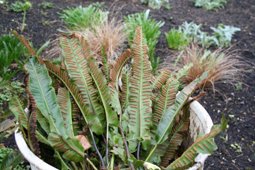 In this part of Bedfordshire, we have escaped the hosepipe ban so far, but it is still early in the year.
In this part of Bedfordshire, we have escaped the hosepipe ban so far, but it is still early in the year.But we are lucky that the Victorians were so resourceful, as our lovely old greenhouse and vinery has a large reservoir built underneath to catch all the rainwater from the glass roofs, and safely stored until we need it. It is much better for the plants, rather than using the local hard water and as it is pumped up to a smaller tank in the greenhouse, the ambient temperature is raised too, so it is far less of a shock to delicate seedlings when they are watered using a fine spry with the watering can.
Speaking of which...we use Haws metal watering cans, they are such a good, long lasting design, and the only part we have replaced in the last 13 years is the rose, which tends to split along the welds - but not bad for the use it gets.



















